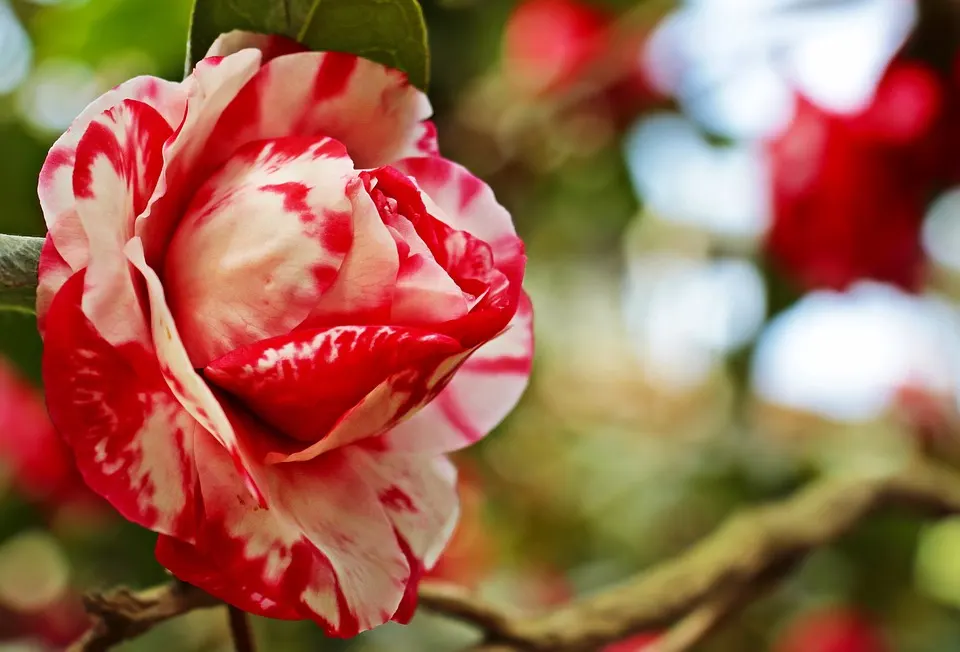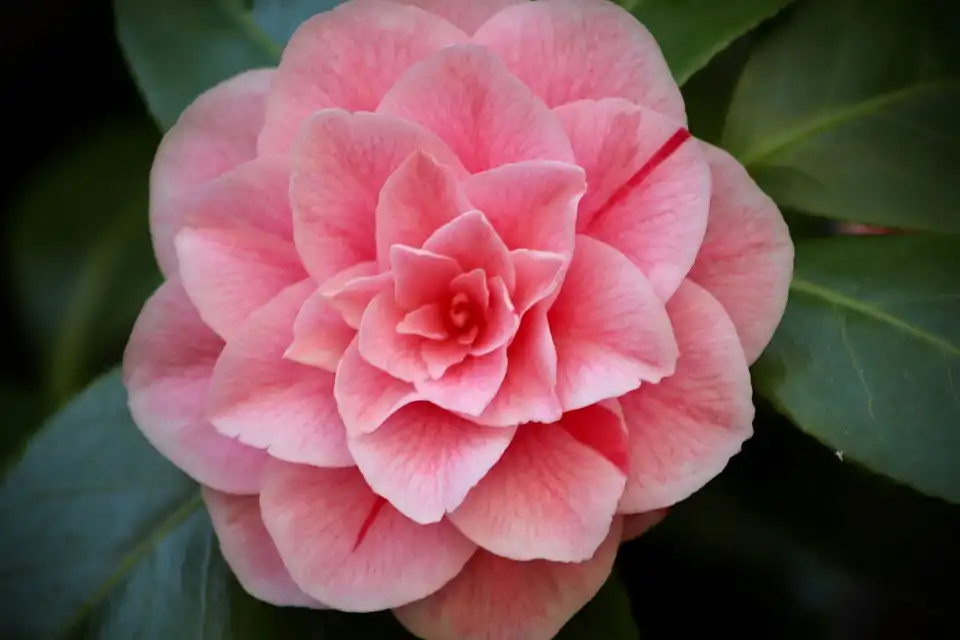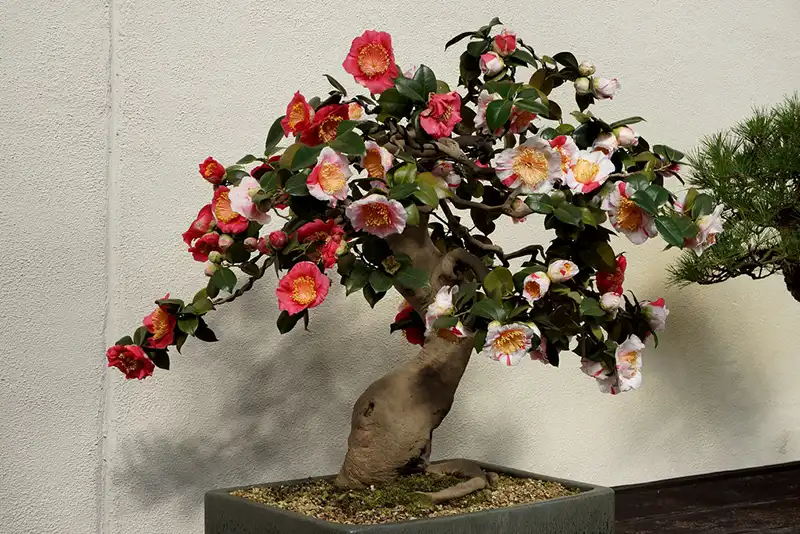5 Steps to Pruning Camellias The Right Way
While the task may seem arduous to some, pruning camellias is essential if you want your tree to remain strong and healthy. Camellia japonica is probably the most popular species of the genus to grow as a bonsai and garden tree, but you need to ensure you care for it properly.
To help you in this regard, we’ve put together an extensive guide on pruning camellias the right way. There are also a few tips on techniques you can use and how you can start one as a bonsai.
Why is Pruning Camellias Important?
The primary reason that pruning camellias is important is to promote airflow between the branches in an effort to prevent pests and diseases. When the foliage becomes too dense, it creates a hub for terrible ailments to thrive in the damp, dark areas. By helping sunlight reach between the branches, you’re also aiding in stem development.
When it comes to bonsais, you prune camellias to give them a pleasant appearance that matches the style you’re trying to achieve. Maintenance is critical in the growing seasons to ensure that they don’t become too large. It also promotes more branches in a process called ramification.
When Should you Prune Camellias?
Camellias usually flower in later spring, early summer. It’s after these blooms that you should prune your tree, letting the summer sunlight filter between the branches and leaves. If you leave the foliage bundled up, the humidity will create dampness that quickly attracts diseases and pests.
For bonsais, you’ll also want to spend time pruning camellias in winter when it’s dormant. You can work on the overall structure and design of the tree in preparation for the next spring. It’s usually easier to do so in the colder months. However, don’t cut back too much during this time.
Steps to Pruning Camellias
Now that you have valuable information about your precious tree, here are the steps towards pruning camellias the right way. Please note that these are general guidelines, and we’ll show more specific techniques a bit later.
Step 1: Wait for the Right Age
Experts recommend not pruning camellia trees when they are younger than four years old. The branches and trunk need time to become strong and healthy. Of course, you should check for any diseases, in which case you should remove the infected parts.
As a bonsai, you’ll probably have a tree that’s much older than four years old unless you propagated it from a cutting or seed. If you’re targeting a specific style or size, you can certainly trim the foliage back no matter how old. Try not to touch the main trunk or established branches and aim for the younger shoots for ramification.
Step 2: Clean and Sharpen Pruning Equipment
Before you bring out the pruning shears, you’ll want to give your camellia tree the best protection from diseases. Sterilize and dry the cutters so that you don’t accidentally place fungi spores on the foliage or branches. It’s also just good practice to keep the blades clean.
You’ll also want to ensure that the pruners are sharps. Using blunt blades will cause damage to the branches, which may lead to an infection in the long run. The wound might also attract pests to your tree.
Step 3: Remove Dead or Untidy Foliage
When you start to prune your camellia tree, be sure to check for any damaged or dead branches first. These objects tend to waste nutrients that could be redirected elsewhere for stronger growth. Carefully clear them away before you begin work on the living parts.
If you’re working with a bonsai, it’s essential that you also focus on any foliage that looks untidy or out of place. It needs to match the style you designed for it, so you don’t need any wayward leaves or twigs that make it appear untidy. It’s also a good idea to remove any new shoots showing up where you don’t want them, like at the bottom of the trunk.
Step 4: Check for Diseases and Pests
Now that you have an opening and a better view, zoom in for a closer look. Mould likes to grow in various forms, such as small cotton-like buds on the nodes where branches meet the trunk. There may also be powdery formations on the leaves, or you may see small insects moving around.
If a branch or leaf is heavily infected, you’ll want to remove it completely. Sometimes you can get away with quickly spraying some insecticide or using neem oil, but in most cases, it’s best to simply cut it off. If there’s too much of a spread of the disease, then perhaps fungicide is an ideal solution compared to stripping it of all the foliage.
Step 5: Clip Branches and Reduce Length
You can now look at which branches to clip and make shorter. It mostly depends on the size and shape you want, but it will help to encourage new growth. This method is called the clip-and-grow technique and is popular among bonsai enthusiasts. There’s no reason you can’t apply it in your garden, though.
How Much Pruning is Necessary?
We’ve mentioned a few times that how much you end up pruning your camellia depends on the shape and size you want. Here’s a quick guide to give you an idea of how much to remove:
- Promote more growth: If you want denser foliage, aim to cut off about 1 inch at the branch tips. New shoots will appear at the end, and you can repeat the process for the new twigs for more.
- Retain existing spread: When you like the current height and spread, cut back about 3 inches on long branches. The new season will see shoots grow out again, back to where it was before.
- Reshaping overgrown foliage: You’ll need to turn to drastic pruning of your camellias when there are too many branches or leaves. In late winter, remove about a third of the foliage. It will spend the season growing them back, so don’t expect to see any flowers that spring.
Techniques for Pruning Camellias
While we’ve shown you the basic steps for pruning camellias, there are two specific techniques you can employ based on your purpose. Let’s look at these now.
Pruning Camellias to Prevent Disease
This pruning technique evaluates the interior of the camellia tree to see if there are any weak points or branches. You can also remove leaves on the inside or on the lower part of stems. It will allow sunlight and airflow to assist it in remaining free from pests and diseases.
Shaping and Designing Camellias
If you want to shape or design your camellia tree, you’ll mainly focus on the exterior of the foliage. As mentioned earlier, you can cut back on branches to promote growth, reduce oversized leaves, or just to make it look neater. You won’t necessarily deal with the inside of your tree unless you don’t like how it appears.
How to Care for Camellias
Pruning a camellia is only one aspect of looking after the tree. If you don’t care for it properly, you’ll end up removing more dead branches than is necessary. Here’s a quick overview of other aspects to consider:
- Position and light: You should place it in a location that receives sunlight in the early morning for a few hours and then shade for the rest of the day.
- Water: Ensure that the roots never dry out, but there needs to be sufficient drainage if you’re growing a bonsai. Ensure that the soil retains a slightly acidic pH and the water isn’t calcareous.
- Humidity: As with most trees, the camellia loves high humidity. However, you shouldn’t let the interior of the foliage become too dense that there’s no airflow.
- Temperature: Ideal temperatures are 40° to 60°F, and it prefers a cooler climate to a hot, dry one.
- Feeding: You can use the same food that Azaleas enjoy, which is a specific acidic food. Don’t fertilize in winter or while it’s flowering.
- Repotting: If you’re growing a camellia bonsai, you’ll need to repot every two to three years to reduce the rootball.
Do Camellias Grow Well as Bonsais?
Species in the Camellia genus are ideal as bonsais. It’s easy to prune them, and they make fantastic indoor trees. When they flower, you’ll see small clusters of blooms compared to their counterparts in the wild. They’re truly beautiful to behold, and you can easily shape them into a variety of styles.
Of course, you’ll need to protect them in the winter, especially if you live in an area that has severe frost. You can keep them in a warm location in your home or use a wireframe. Camellia trees don’t handle the cold that well, and bonsais may develop diseases or die.
You can check our ultimate guide on bonsai tree care for further general guidance.
Image courtesy of John Winder | License Details
How to Start a Camellia Bonsai
If you want to start your own camellia bonsai from a tree you have in your garden, the easiest way is via cuttings. Here’s what you can do to propagate one:
- Prepare a small bonsai container with slightly acidic soil that has a rich NPK value
- Take a semi-hardwood cutting of about two to three inches in mid-summer
- Place rooting powder on the lower tip to help promote roots
- Put the container in a transparent bag to retain humidity and keep out any pests and diseases
- Place the container and bag in a semi-shaded area that receives dappled or indirect light
- Provide a small amount of water for some moisture
- Open the bag once a week and ensure there’s fresh air and check that the soil remains moist from the humidity and condensation droplets
- Test the cutting after a month to see if there is some resistance. You may also see new leaves if roots have formed.
- Once it reaches a decent height and strength, about one season or the next spring, you can remove it from the bag
- Check our ultimate guide to bonsai tree care for general tips on how to look after and style it
Final Thoughts
We hope you’ve enjoyed our detailed guide on pruning camellias. We wanted to ensure that you receive as much information as possible so that you can do it correctly. Let us know if you succeeded and feel free to share any pics with us on Instagram, Twitter, and Facebook.
FAQs about Pruning Camellias
Oh, and one more thing before you go. We’re sure some of you may have questions about cutting your camellia trees. Here are some solutions for you.
The best time to maintain your camellias is during late spring and early summer after flowering. For the northern hemisphere, it’s around May or June while those in the southern hemisphere will do so somewhere between December and January. It all depends on when the blooms appear.
If there’s too much foliage on your camellia, you can cut back hard without causing damage to it. Aim for about a third of the tree, maybe more if needed. This approach works well on older trees that have well-established trunks and branches.
While you can prune camellias quite hard, removing too many branches is a bad idea. It causes intense stress that may cause it to die, especially if it’s a bonsai. A good rule of thumb is up to about one-third and not too close to the soil.
If you notice that your camellia’s leaves aren’t doing too well, it’s due to the flowers taking up all the resources. You can deadhead it by removing the flowers from the branches, sending the nutrients to the leaves instead. There will always be future seasons to show off the blooms. You can also try to increase the nitrogen intake.
To make a camellia bushier, you can prune some of the older branches back to the base. New shoots and leaves will appear, giving you richer foliage. You should also remove any branches that cross each other for better airflow.







